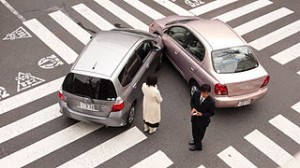Black Ice Safety
Most of Central Texas has been suffering through some uncommonly frigid weather conditions lately. Although forecasters are promising an end to these icy nights and chilly days, freezing precipitation is still affecting certain areas of the state. Other than bundling up what do you really need to worry about? Safety officials will tell you that your main concern should be the roads and how conditions affect your driving. Highways have been shut down all across Texas in the past few weeks after being deemed unsafe to drive on. These conditions have resulted in a frightening spike in the number of car accidents and car accident fatalities. You can arm yourself against these sorts of accidents by paying special attention to road conditions, warning signs, and learning how to recognize danger, like black ice.
What Is Black Ice?
Chances are you’ve heard the term “black ice” before, even if you’ve never actually experienced it. Black ice is less common in Texas whose cold weather season is usually very mild. Black ice is a thin, clear layer of ice that forms on various surfaces including roads. Black ice is usually completely invisible to drivers. Even standing outside your car on a road, it would be hard for you to see without stepping directly on it. Black ice robs your car of traction. Instead of your tires gripping the road, when driving on black ice your tires float above it, on a layer of ice. Often black ice occurs after a light rain or a drizzle falls onto the surface of a road that is below freezing. Black ice often looks almost identical to a wet or damp road. This can create a false sense of safety or control in a driver. Because the ice is thin, it can form in a very short amount of time. This means you could be driving on a road that appears safe and hasn’t been closed, and then a light rain could fall and you’d be at risk of driving on an unsafe, black ice-ridden road. Remember to:
-
Pay attention to certain, at risk portions of road, even if the road appears dry and fine. Black ice tends to form on portions of the road that are shaded. This could mean an area where trees hang over into the road. Black ice most predominantly occurs on bridges and overpasses.
-
Black ice is most common in early mornings and late at night when the temperature drops. Avoiding driving during these times in areas where black ice has been reported.
-
If you notice cars in front of you swerving or appearing to have lost control, slow down, and completely avoid the area. Either changes lanes, turn around, or take to the road at under 10 mph.
Call Loewy Law Firm if you’re involved in a cold weather car accident and need legal representation that you can count on.
